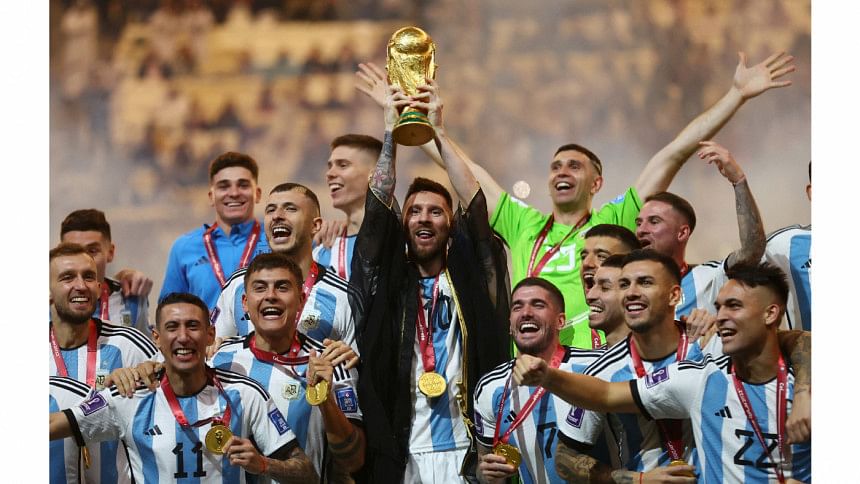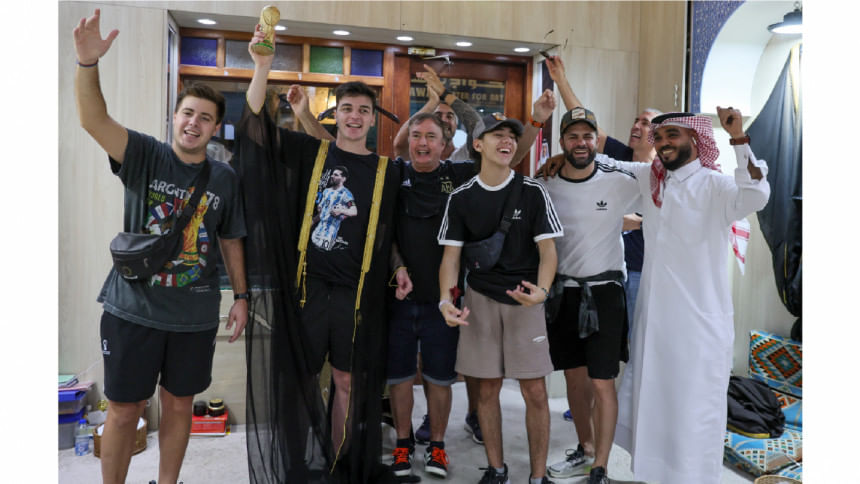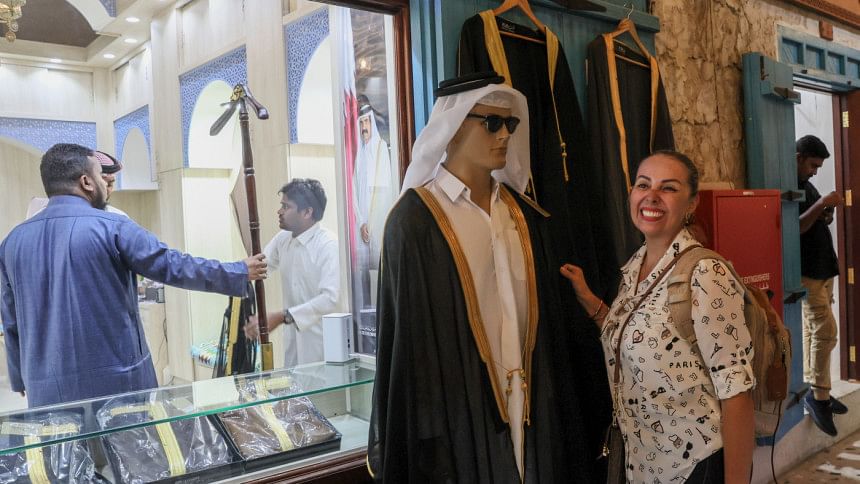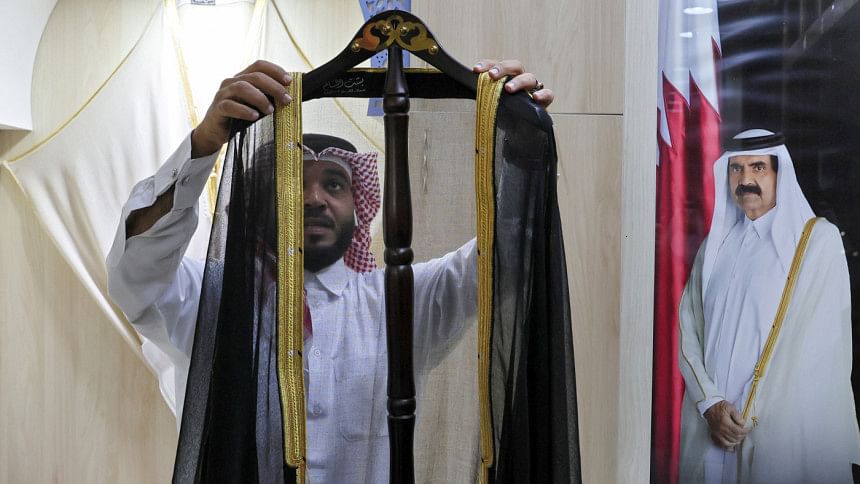Messi's Arab cloak maker sees boom in sales after World Cup

Watching Sunday's World Cup final, Ahmed al-Salem was more emotional than most football fans when Qatar's emir placed a black and gold cloak over the shoulders of Argentina's victorious captain Lionel Messi.
The garment Messi wore as he lifted the football trophy was a $2,200 'bisht', a traditional gown worn by men for weddings, graduations and official events -- and it was made by Salem's family company.
The gesture has sparked international debate on social media over whether it was appropriate.
Salem watched Argentina beat France in a cafe near the family's store in Doha's Souq Waqif market, having earlier handed two of the delicate handmade cloaks to World Cup officials -- one in Messi's diminutive size and one to fit the taller French captain Hugo Lloris.

"We did not know who they were for and I was stunned," he told AFP of the moment when the emir, Sheikh Tamim bin Hamad Al-Thani, dressed Messi in the cloak.
Salem recognised his company tag and is now celebrating his own World Cup victory.
The Al-Salem store, a longstanding bisht supplier to Qatari royalty, normally sells eight to 10 garments a day.
On Monday, the day after the final, sales shot up to 150, including three copies of the top-of-the-range bisht made famous by Messi, said Salem.
"At one stage there were dozens waiting outside the store", he said.
"They were nearly all Argentinians," he added as he watched eight supporters of the new world champions sing their "Muchachos" (mates) anthem and take pictures of themselves while wearing a fragile bisht and carrying a copy of the World Cup trophy.

- Bisht boom -
A stream of fans came into the shop as Salem spoke to AFP, and all of them applauded the emir's gesture.
"We were all happy when we saw that, it was a gift from one king to another king," said Mauricio Garcia as he tried on the cloak, but decided the price tag was too high to buy.

Some commentators, predominantly European, criticised Messi's shirt being covered for the trophy presentation.
But the moment was welcomed by Arabic social media users.
Salem and other Arab commentators explained the intention was to "honour" Messi and that the gesture had been misunderstood.
"When a sheikh dresses a person in a bisht, this means honouring and appreciating this person," Salem said.
It was a "very important moment" for Qatar as it seeks a World Cup publicity boost, said Carole Gomez, a professor of sports sociology at the University of Lausanne, in Switzerland.
"These pictures are widely spread about, conserved and reissued," she said.
Salem said when World Cup officials went to his store "they wanted the lightest and most transparent fabric".
"I was surprised because we are in winter, so it seems that the goal was to show the Argentine uniform and not cover it," he said.
While the bisht is worn in many Gulf countries, Al-Salem is the biggest of about five Qatari producers, employing about 60 tailors.
Each bisht takes a week to make and goes through a seven stage completion, with different workers adding different lines of gold braid to the front and arms.
For Messi's bisht, the gold thread came from Germany and the Najafi cotton fabric was imported from Japan.

 For all latest news, follow The Daily Star's Google News channel.
For all latest news, follow The Daily Star's Google News channel. 








Comments